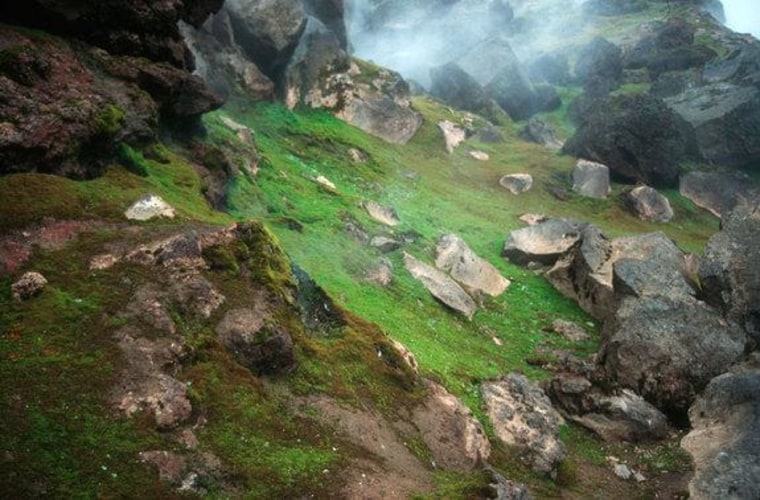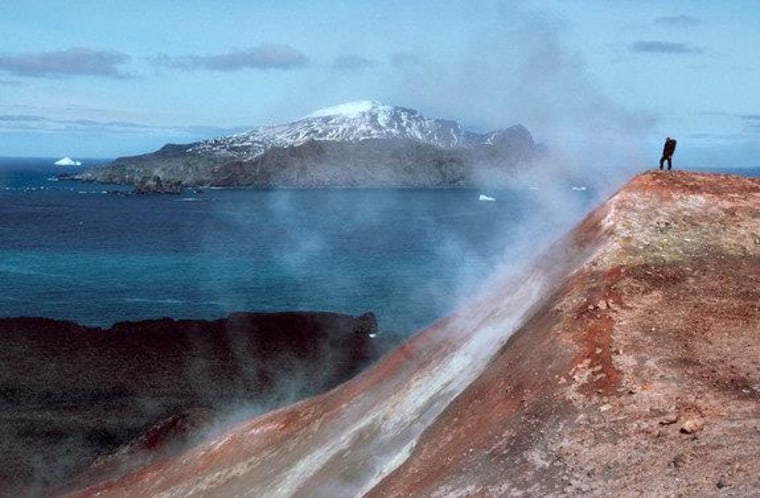Like an ice age radiator, heat from volcanoes helped Antarctica's plants and bugs survive Earth's glacial periods, scientists think based on the result of a new study.
The findings suggest that volcanoes can provide a cozy home for plants and animals during ice ages, either in ice caves or on warm ground heated by geothermal features such as hot springs, the researchers said. The study was published today (March 10) in the journal Proceedings of the National Academy of Sciences.

"Volcanoes are generally seen as these big, explosive destroyers of life, but they might be important in promoting biodiversity," said Ceridwen Fraser, a biogeographer at Australian National University in Canberra and lead study author. "This explains how life survived in Antarctica, but we think this idea of geothermal refuges could also apply elsewhere."
A BBC television documentary on Mount Erebus, Antarctica's largest volcano, inspired Fraser and her colleagues to test whether Antarctica's volcanoes were an ice age haven. Mount Erebus is an active volcano, with ice caves that harbor microbial life today. [Fire and Ice: Images of Volcano-Ice Encounters]
"We decided to look at whether there was any evidence that these species could have survived at volcanoes, and that is what we found,” Fraser told Live Science's Our Amazing Planet.

Antarctica has at least 16 volcanoes that have erupted in the past 20,000 years (more evidence of as yet undiscovered eruptions could be hidden below the ice.) At spots such as Deception Island, underlain by a large magma chamber, geothermal heating could have kept the ground ice-free during the past ice age, the researchers said.
"These were not only ice-free, but much warmer," Fraser said. "These were really nice, warm places."
Fraser and her co-authors analyzed more than 38,000 records of Antarctic species, and discovered there are more moss, lichen and bug species close to Antarctica's volcanoes, and fewer farther away.
The pattern supports the idea that these species weathered the worst of the ice age at Antarctica's volcanoes, then gradually expanded their habitat range after the ice receded.
- Becky Oskin, Senior Writer, LiveScience
Email Becky Oskin or follow her @beckyoskin. Follow us @OAPlanet, Facebook and Google+. This is a version of a report that appeared on LiveScience.com. Read the original report.
- 50 Amazing Facts About Antarctica
- 5 Colossal Cones: Biggest Volcanoes on Earth
- Life on Ice: Gallery of Cold-Loving Creatures
Copyright 2014 LiveScience, a TechMediaNetwork company. All rights reserved. This material may not be published, broadcast, rewritten or redistributed.